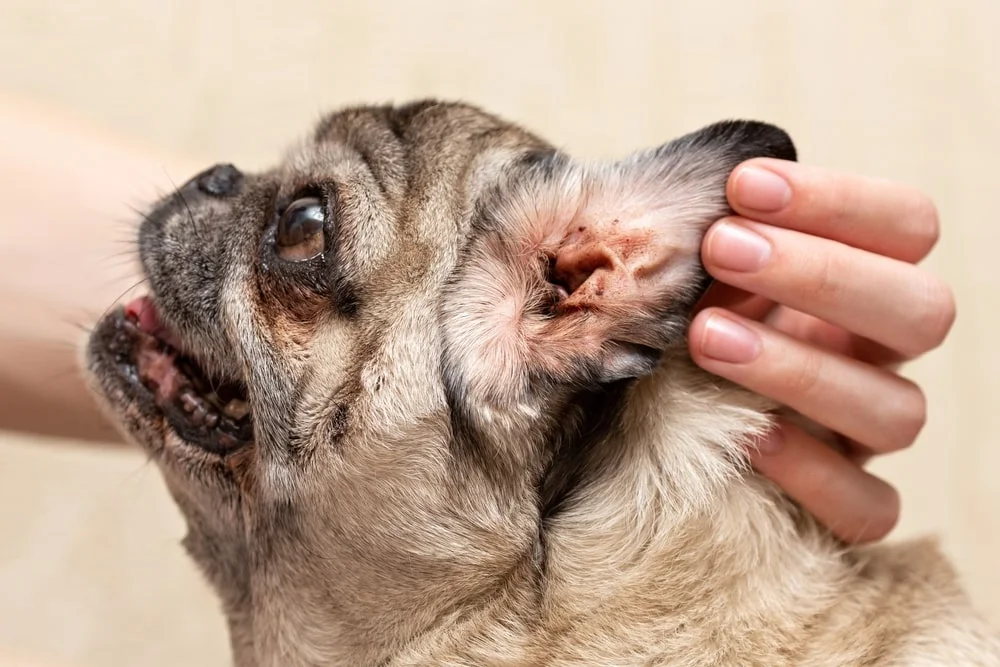PET HEALTH
Vestibular Disease in Dogs: Symptoms, Causes, & Treatment
Vestibular disease, also known as vestibular syndrome, can be scary and surprising. One minute, your pup is fine. The next, they start to spin in circles, stumble, and collapse onto the floor. While vestibular syndrome in dogs can resemble a seizure or stroke, it’s far less dangerous. Still, this is a condition that shouldn’t be ignored. Let’s take a look at vestibular disease, what causes it, and what you can do to help your pup.
MetLife Pet Insurance can reimburse vet bills for vestibular disease diagnoses and treatments.
A MetLife Pet Policy May Help Cover Vestibular Disease Costs
What Is Dog Vestibular Disease?
Vestibular disease affects your dog's inner and middle ear sensory receptors, which maintain an animal's balance.1 Vestibular structures send information to the brain about where the body is in space — whether it's moving, standing, sitting, leaning, or falling. When the vestibular system functions correctly, your dog can run, jump, balance, and live an action-packed life. Malfunctions of this system make it much more difficult for your dog to maintain balance, even when they’re standing still. This, in turn, can inhibit everything from playtime to naptime.
It may also be called “old dog” vestibular syndrome, since it's more common in older dogs.2 However, the disease can occur in dogs of any age and breed.3
What Causes Vestibular Disease in Dogs?
While some breeds seem to have a genetic predisposition for the disease,3 dogs may experience vestibular syndrome due to:1
Sometimes, a dog will experience rapid onset vestibular disease, with no warning or known cause — only for it to clear up quickly and without medical care. In this case, the condition is referred to as idiopathic vestibular disease in dogs.1
Vestibular Disease in Dogs: Symptoms
The symptoms of vestibular disease are easy to spot, but the disorder is often mistaken for a seizure, stroke, or brain tumor. Luckily, it's not nearly as severe as any of those conditions.
Symptoms can come on without warning. You should take your dog to the vet for a proper diagnosis if they display any of the following signs:2
- Walking in circles
- Standing with an unusually wide stance
- Tilting of the head, which can range from slight to extreme
- Falling or rolling3
- Acting dizzy
- Drifting or darting eye movements
- Abnormal eye positioning
- Stumbling or lack of coordination
- Vomiting
Look for other behavioral changes, too. Does your dog love to ride in the back seat, but they suddenly begin experiencing motion sickness? Are they lying on their belly to drink from the water bowl? These could be signs of vestibular disease. Luckily, vestibular disease can go away on its own after a few days. If symptoms don't begin to improve after 72 hours, this may be a sign of something more serious.1
Should you put a dog down with vestibular disease?
No. Although vestibular disease is unpleasant for dogs, it’s not life-threatening, and many cases resolve on their own within a few days. At most, a full recovery may take 2 or 3 weeks.1 During that time, your pup will likely need extra love and care from you, but it’s nothing that you can’t get through together!
Vestibular Disease in Dogs: Diagnosis and Treatment
Your vet will conduct a physical examination of your dog's ear to determine which area is affected.3 They may take blood samples, cultures, and other specimens to rule out infections and viruses. An X-ray may be suggested to rule out physical damage to your dog's ears.3
Additional testing — such as digital imaging like an MRI or spinal tap — may be required if your dog doesn’t have an infection. A biopsy may be suggested if a polyp or tumor is found inside your dog’s ears to determine if the growth is cancerous.3
Once a cause has been found, your vet will likely recommend treatment to address the underlying issue. For instance, if it’s an ear infection, treatment may involve antibiotics.1 If the case is severe enough, your vet may also recommend additional therapy and hospitalization to help keep your dog healthy while they recover.1
What Should I Do if My Dog Has Vestibular Disease?
Once you’ve received a diagnosis from your vet, you should follow their care guidance closely. If possible, take your dog to a veterinary rehabilitation center. Here are some of the care instructions you may be given by your veterinary care team.
Assist your dog with essential functions
Your vet may prescribe anti-nausea medication if your dog is vomiting or too nauseous to eat.4 You may have to bring your dog's food and water closer to where they are resting, and you should consider switching their food to something easy to eat and digest. A good option to help them may be to elevate their food and water bowls so they don't have to reach their head down too far.
Avoid carrying your dog
Dogs need time to recalibrate their vestibular system by walking on their own. You can help them walk by placing your hands on either side of their body. Consider investing in a boosting harness to help guide and support them, especially during potty breaks and while navigating steps.4
Keep your dog safe from harm
Dizziness caused by vestibular disease can lead to accidents, so limit the amount of space through which your dog wanders in your home. Keep them away from stairs, and clear the floor of clutter that your pet could trip over.2
Make sure your dog is comfortable
Time and rest are key to your dog’s recovery. If your dog has trouble sleeping, try putting a rolled-up blanket or towel under their head for support. Spend time on the floor with them while their world is all topsy-turvy.
Vestibular disease in dogs is not life-threatening. But be sure to keep them cared for during recovery. Provide love and support for them, and they'll be back to their fun-loving self in no time.
Pet Insurance Can Help With the Cost of Vestibular Disease
Keeping your pup happy and healthy is a priority, especially as they age. Vestibular disease is common, generally treatable, and not a death sentence for your dog. However, it can be costly to treat if you don’t have pet insurance. MetLife Pet offers dog insurance plans that are fully customizable to fit your budget and lifestyle needs, so you don’t have to choose between your budget and your pet. Get reimbursed for up to 90% of the cost of covered services, including diagnosis, treatment, and even dog rehabilitation!5
Just how much money does that translate to? Take a look at the real-life case of Trudy. This senior California dog developed vestibular syndrome — and a $2,750 vet bill to go with it! Fortunately, her parents had a dog insurance policy from MetLife Pet. They got reimbursed for over $2,200, making it easier for them to afford Trudy’s treatment and focus on her recovery.6
Don’t wait for life to spin you and your dog in circles. Learn more about how our pet insurance works, or get started today with a free quote!
Help Keep Your Dog Healthy and Happy



